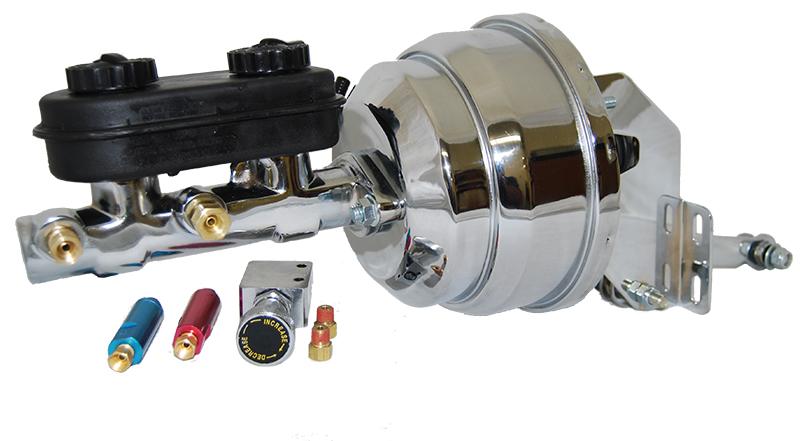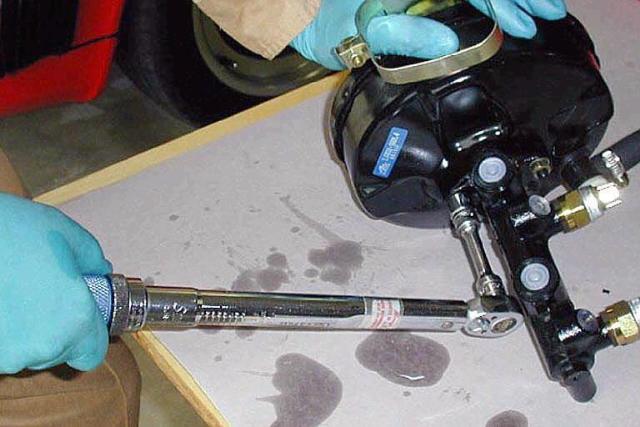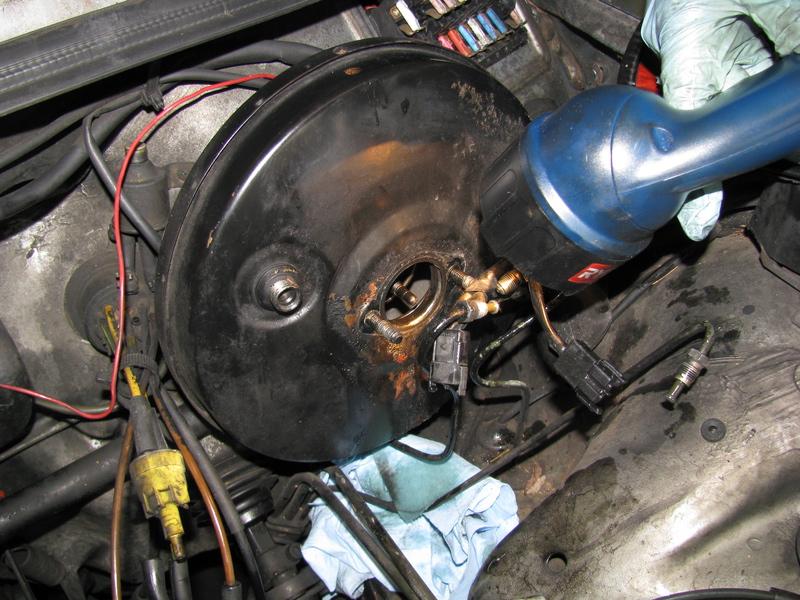You need brake booster replacement when the brakes of your car don’t appear to work properly.
A brake booster is a vacuum-powered machine that increases the pressure applied to the brakes.
It works by deriving power from the vehicle’s vacuum system and helping the ABS system to put the right amount of pressure on the brakes to make them function correctly.
Contents
How To Find Out If Brake Booster Repair Is Necessary?
The easy way to know is to check whether your car’s brakes are working appropriately. Do you need to put more than usual pressure to stop the car?
Does your vehicle take a longer time to stop after pushing the brake pedal? If yes, you probably need to replace the brake booster.
A faulty brake booster can lead to serious accidents. So, you should address the problem as soon as possible. Check out the process of replacing the faulty booster with a new one:

Brake Booster Replacement: Tools and Supplies
- Screwdrivers
- A socket wrench
- A tube nut wrench
- Brake fluid
- A floor jack
- A new brake booster
Brake Booster Replacement: Directions
The brake booster is positioned behind the firewall of the brake master cylinder. So, lift the car to that side with a floor jack and remove the tires.
Remove master cylinder. Open the metal cover of the brakes with a socket wrench to reach the master cylinder.
Use the tube nut wrench to loosen the tube nuts of the brake lines that are connected to the master cylinder. Disconnect the cylinder from the brake lines with an open-ended wrench.
Check the master cylinder to see if it has any leakage or fault in it. Proceed to the next step after the inspection.
Remove the faulty brake booster. You’ll see the brake booster after removing the master cylinder. Disconnect it from the brake pedal and vacuum hose by removing the nuts connecting it to the brake pedal.
Then, remove the bolts that keep it attached to the firewall. This way, you’ll be able to disconnect it from the master cylinder completely.

Attach the new brake booster. Position the new brake booster to the place where the old one was. Secure it to the firewall by turning and fastening the bolts and nuts. Then, attach it to the brake pedal.
Reconnect everything. In this step, you’ll have to re-attach the brake lines and master cylinder to the booster. You’ll need to fill up the master cylinder’s brake fluid in case it’s empty.
Attach the tires, remove the floor jack, and switch the engine on to check if the brake system is working properly.
The Cost of Brake Booster Repair
If you go to an auto repair shop to do the job, the average cost for a brake booster replacement will be approximately between $420 and $760.
The price of the parts is likely to be between $170 and $440 while the average labor cost will be somewhere between $250 and $320.
However, the cost can be more or less depending on the nature of the damage and the fee of the repair shop. You can contact your local repair shop to get an estimation.
FAQs
1. Can atmospheric conditions affect the brake booster replacement process?
Extreme temperatures can affect certain components you’ll be handling during the replacement process, such as seals and the brake fluid’s behavior.
Cold weather can make rubber seals harder and more brittle, potentially complicating their installation. Similarly, high temperatures can make some plastics and rubbers too pliable. It’s best to work in a temperate, stable environment.
2. Is there a way to test the new brake booster’s functionality before completing the installation?
Before fully securing the new brake booster and reassembling all components, you can perform a preliminary check by ensuring the booster holds vacuum. With the engine off, depress the brake pedal several times to deplete residual vacuum.
Then, while pressing down on the pedal, start the engine. The pedal should noticeably drop towards the floor if the booster is working correctly. This test confirms the booster’s ability to provide power assistance.
3. How does the make and model of my vehicle influence the choice of a replacement brake booster?
Brake boosters are not universally interchangeable among all vehicles due to differences in size, mounting configuration, and vacuum requirements.
Ensure you select a replacement that is specifically designed for your vehicle’s make and model. Using an incorrect booster can lead to improper brake function or installation issues.
4. What specific tools might I need that are not in a standard tool kit?
Replacing a brake booster may require some vehicle-specific tools, especially for detaching the master cylinder or the booster itself from the firewall. This can include special sockets for wrenches.
Additionally, a vacuum pump might be necessary for testing the booster’s vacuum capability.
5. Can a brake booster replacement affect my vehicle’s ABS system?
While the brake booster itself is a separate component from the Anti-lock Braking System (ABS), care must be taken not to introduce air into the ABS module when disconnecting and reconnecting the brake lines to the master cylinder.
Air in the ABS system can require a more complicated bleeding process, sometimes necessitating professional equipment to cycle the ABS valves properly.
6. After replacing the brake booster, why might the brake pedal feel different?
The brake pedal feel can change due to the new booster providing a different level of power assist compared to the old one, especially if the old booster was failing and not providing adequate assistance.
A slight adjustment period is normal, but if the pedal feel is significantly off or if it doesn’t return to normal after a few drives, re-check the installation and bleed the brakes to ensure no air is trapped in the system.
Check out this video from CarsNToys to learn more about brake booster!
Final Words
Addressing these uncommon aspects of brake booster replacement can help ensure a smoother repair process, enhancing both safety and performance post-replacement.
Always consult your vehicle’s service manual for specific instructions and precautions, and consider seeking professional help if you encounter difficulties during the replacement process.




nice info
Thank you. We will provide more useful information like this. Stay tuned
Understood now..